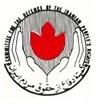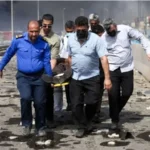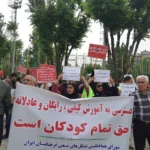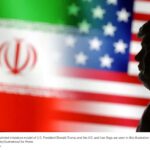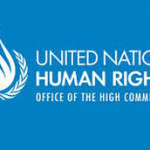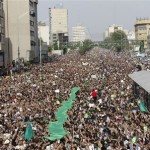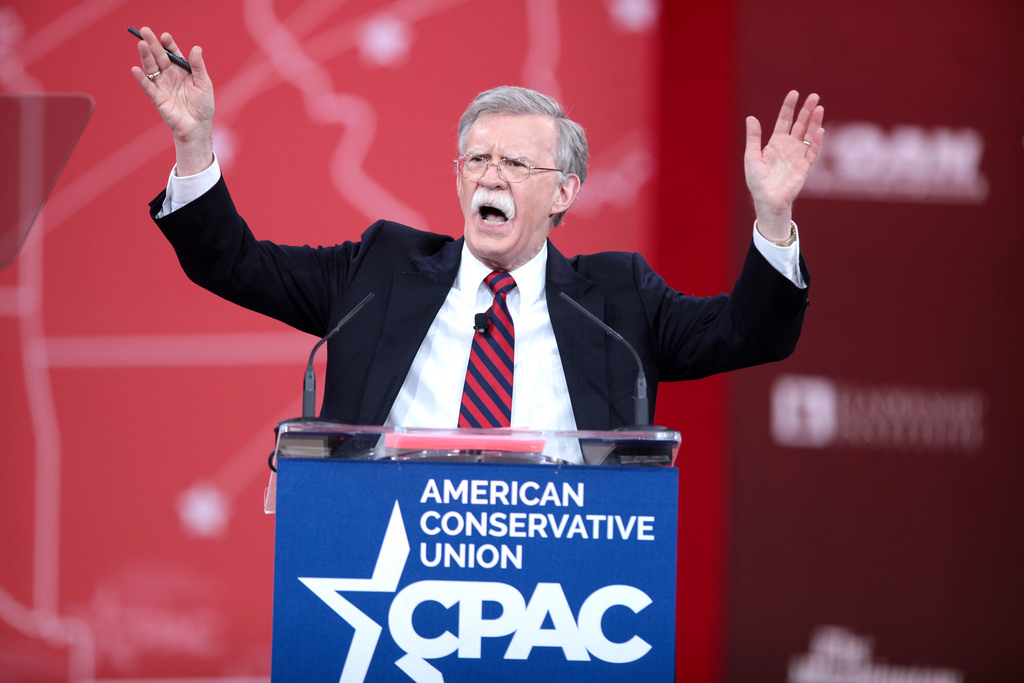
JANE GREEN assesses the implications of the return of the rightwinger for Iran, its protesting workers, the nuclear deal and the Middle East
DURING the administration of George W Bush, the under secretary of state for arms control, one John Bolton, was an enthusiastic supporter of the invasion of Iraq.
In spite of the catastrophe which followed in human, political and military terms, Bolton remains an enthusiastic interventionist. With recent titles such as To Stop Iran’s Bomb, Bomb Iran under his belt, it does not take a great deal of digging to find that Bolton’s position has not fundamentally changed in the intervening 15 years.
If anything, Bolton’s position has hardened as he has openly argued for regime change in Iran in recent years.
Bolton’s appointment follows hard on the heels of the recent sacking of secretary of state Rex Tillerson in favour of CIA director Mike Pompeo — another confirmed hardliner and outspoken opponent of the Iran 5+1 nuclear deal.
Taken together, these appointments shift the balance in the White House towards a shredding of the Iran nuclear deal, negotiated at great length with European partners, as well as Russia and China, under former US president Barack Obama.
The new balance signals the greater likelihood of a military option being considered in relation to Iran.
The US position will have been further reinforced by the visit last week of Saudi Crown Prince Mohammed bin Salman. Fresh from his state visit to Britain — from which he emerged bristling with weapons — the US will be looking to add to the $54 billion spent by the Saudis with US arms suppliers in the past nine months.
As President Donald Trump made clear: “Saudi Arabia is a very wealthy nation, and they’re going to give the United States some of that wealth, hopefully, in the form of jobs, in the form of the purchase of the finest military equipment anywhere in the world.”
The Crown Prince added that last year’s Saudi pledge of $200bn in investments will rise to approximately $400bn and that a 10-year window to implement the deal had already begun.
The Saudis also have a longer-term agenda, however, in their engagement with the United States, which is to fulfil their aspirations to become a nuclear power.
In spite of their massive oil reserves, the Saudis have been in negotiations for some years with the US over diversification of their energy base and are keen to negotiate access to technology which would allow them to build a nuclear reactor.
The Iran nuclear deal was predicated upon the unfounded assertion that, in developing a civil nuclear programme, the Iranian regime would inevitably move towards the creation of nuclear weapons.
The inspection regime imposed by the agreement, however, prevents the Iranians from enriching uranium and reprocessing plutonium to weapons-grade levels.
In exchange, the 5+1 deal obliges the West to lift some of the sanctions imposed upon Iran and allows for greater capacity for Iran to trade in international markets.
In spite of these restrictions, and the crippling impact which sanctions have had upon the Iranian economy, the Saudis cannot countenance a Middle East in which Iran has even a limited civilian nuclear capability if they have none.
Saudi ambitions to develop nuclear energy are, on the one hand, about keeping pace with Iran and asserting dominance as the regional Islamic superpower.
In an interview with CBS News, Mohammed bin Salman openly stated that “Saudi Arabia does not want to acquire any nuclear bomb, but without a doubt if Iran developed a nuclear bomb, we will follow suit as soon as possible.”
Not only has he referred to the Iranian nuclear deal as a “flawed agreement,” he has made clear that any deal relating to the development of nuclear energy in Saudi Arabia will not be subject to the same limitations — in particular regarding the capacity to upgrade uranium and plutonium to weapons-grade levels.
While some in the US are understandably nervous about the prospect of a Middle East nuclear arms race, the danger of the Saudis going to the Russians or Chinese for nuclear technology rings even greater alarm bells.
The warnings to Iran were ramped up even further last week when Israel, strategically allied to both the US and Saudi Arabia in the Middle East, admitted to bombing a suspected Syrian nuclear reactor in 2007 and took the opportunity to warn Iran that it would not be allowed to develop nuclear weapons.
While the Syrian reactor was purely for civilian energy generation purposes, the Israelis nevertheless argued that this could lead to weapons capability and thus launched the pre-emptive strike, only now admitted due to the declassification of previously secret Israeli intelligence material.
Further instability in the region is fuelled by the recent revelations that a thousand Pakistani troops are to be sent to Saudi Arabia, as part of a long-standing bilateral agreement between the two countries, on a so called “train and advise” mission.
While it is claimed that the troops will not be used in the Saudi conflict with Yemen, the deployment coincides with the culmination of a week-long joint exercise between the Saudi and Pakistani navies in the Arabian Sea.
Retired Pakistani army chief Raheel Sharif was appointed last year as the first commander of the Islamic Military Alliance to Fight Terrorism (Imaft) which is being described as the “Muslim Nato,” an alliance of largely Sunni Muslim Islamic states led by Saudi Arabia. Unsurprisingly, Shi’ite Muslim Iran is not part of this alliance.
Given the international outrage the Saudi role in Yemen has raised, the appointment of Sharif and the current troop deployment puts Pakistan in danger of being drawn into a wider Middle East conflict, with the Houthi rebels in Yemen being backed by Iran.
One observer has described Pakistan’s position as “a balancing act that increasingly resembles a tightrope as conflicts and disputes in the Gulf mushroom.”
For the people of Iran there is little good news in the current alignment of forces in the Middle East and in the White House.
Widespread protests inside Iran, expressing disillusionment with the regime’s economic policy, political corruption and human rights record have met with arrests and violent suppression.
The limited lifting of sanctions which the 5+1 agreement was meant to facilitate has not been enough to alleviate the high levels of unemployment and rampant inflation in the Iranian economy.
Those in work are poorly paid and often on short-term contracts. Those out of work are sinking into poverty. While protests have rocked the government, it has not been dislodged.
The threat of military attack on Iran would be used by the ruling theocracy to justify repression of dissent and as a means to demand total loyalty.
Iranian people need peace to be able to build their movement for a democratic and just future. That is the only viable route to stable democratic change.
The US support for hawkish regimes in Saudi Arabia and Israel, combined with an increasingly right-wing lineup of personnel in the White House, increases the possibility of external intervention in Iran.
While the West may have had its fingers burnt provoking civil war and outside intervention in Syria, that may not be enough to stop it taking its chances on another military adventure.
Both Saudi Arabia and Israel regard Iran as an existential threat. Their combined military capability would be a force to be reckoned with.
In military terms, Iran would be no pushover. However, for the people of Iran, any outside intervention would be a step backwards in terms of the fight for peace, social justice and democracy.
■ Jane Green is national organiser of the Committee for the Defence of the Iranian People’s Rights.
This article is first published in the Morning Star, 26 March 2018

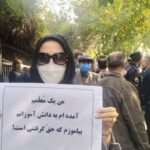

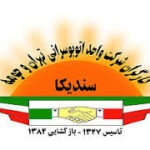






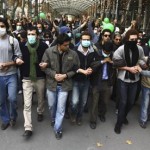
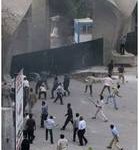
 Posted in
Posted in 